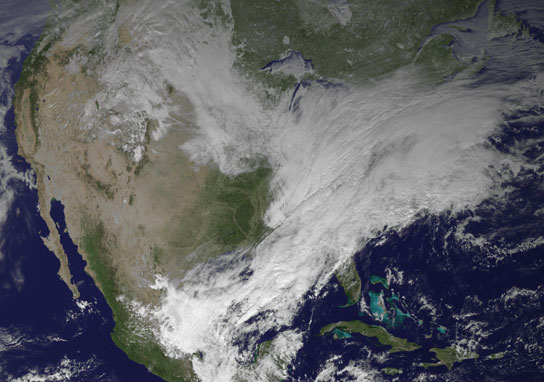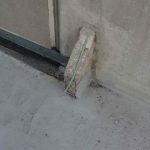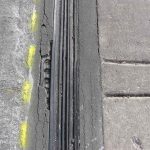Did the Polar Vortex suck life out of our parking structure? How do I find out? Then what do I do?
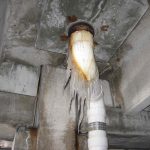
Leaking salt laden water has led to corrosion of embedded metals (note rust staining) and concrete cracking near a drain.
It has been a winter of record cold, record snow, record freeze/thaw cycles, and record deicer (salt) usage for much of the country. Our roads, bridges, parking lots and parking structures have taken a worse beating than we have seen in a long time. Driving the freshly deteriorated roads, pretty much anywhere, will confirm this.
So what does this mean for those responsible for managing a significant asset such as a parking structure? Typical conditions these structures experience from such a harsh winter include a higher number of freeze thaw cycles, significantly higher snow plowing events, and higher deicer usage. So why is that of concern? I thought concrete is forever, just like a diamond.
Numerous freeze/thaw cycles can lead to concrete cracking. Plowing snow often leads to damage to thefollowing critical waterproofing elements of a parking structure:
- Expansion joints
- Sealant joints throughout the structure
- Surface applied waterproofing membranes
- General degradation of the surface of the concrete by scraping and gouging
So what? A little cracking, some water leaks, what’s the big deal?
The big deal is that once these waterproofing elements are breached, salt contaminated water can access cracks and areas of the structure that are supposed to remain dry and start corrosion of the embedded steel reinforcing that is inside all concrete structures. Corrosion leads to more cracking, loss of reinforcing steel, and a reduction in the strength that keeps the structure standing up. That is a big deal.
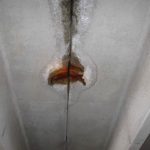
Failed joint sealant has led to water leakage and corrosion of embedded tee flange to tee flange connector which degrades the structural integrity of the parking structure.
A very simplified checklist of what to do once the snow is gone is as follows:
- Floor Wash – Cover your floor drains with a filter fabric and wash the entire garage down to remove salt, sand and debris.
- Inspect – Take a close look at all the surfaces of the entire structure immediately after washing or after a rain. You are looking for leaks below joints, cracks, cracks with rust staining and areas where pieces of concrete are loose (delaminations) or where pieces of concrete are missing(spalls).
- If you just see leaking but no cracking, rust staining, or spalls, properly repair the leaking waterproofing elements.
- If you see cracking and especially cracking with rust staining, it’s time to call an experienced structural engineer, particularly one with extensive experience in evaluation and repair of parking structures.
- What can the right engineer do for you? They can properly evaluate your particular parking structure and tell you: a) if you have a problem, b) how big the problem is, and c) how expensive the problem is. The right engineer can help guide you through the repairs in a way that fits your budget yet extends the life of your structure.
That’s about the whole story in combating the effects of Old Man Winter in as short of a format as you will ever find!

